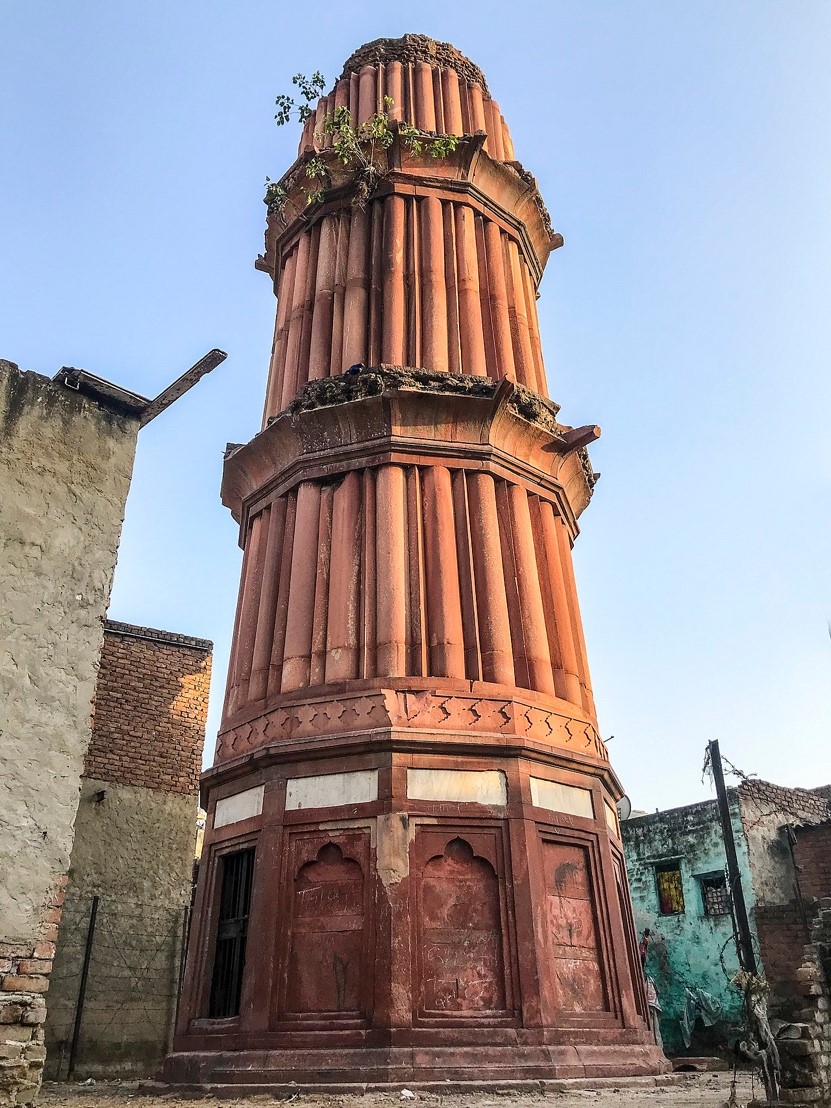Description

Disclaimer: Copyright infringement not intended.
Context
Today, the Hastsal Minar is more or less unknown even to people living in Hastsal, let alone Delhi, while its origins remain a subject of mystery and debate.
Details
Location
- Hastsal village, Uttam Nagar, West Delhi, India
History
- Built in 1650 by Mughal emperor Shah Jahan near his hunting lodge in Hasthal.
- Originally a 5-storeyed tower topped with a domed Chhatri pavilion, used by Shah Jahan for entertainment after hunting.
- Legends suggest a tunnel existed from the tower to the royal hunting lodge.
- Later, the domed pavilion and upper two storeys collapsed in the 18th century.
- Became abandoned and forgotten in recent history, surrounded by urbanization.

Architecture
- Resembles Qutub Minar in Delhi, built with Lakhori bricks and red sandstone.
- Originally had five storeys with a narrowing diameter, accessed by a narrow staircase.
- Each storey surrounded by an octagonal ring with overhanging eves (Chhajja) like the Qutub Minar.
Threats
- Endangered due to decades of neglect and lack of conservation.
- Threatened by natural elements and encroachment of new constructions in Hastsal.
- Completely surrounded by haphazardly built houses and buildings, with new constructions encroaching upon the lower platform.
- Access to the tower is through a narrow lane surrounded by new constructions.
Legends
- Legends surround its origins, with locals believing it was constructed by Prithviraj Chauhan or used by the Pandavas for their elephants.
- According to Zafar Hasan, the minar was constructed by Emperor Shah Jahan, who had his Shikargah (hunting palace) nearby.
- The structure's domed arches and use of red Lakhori bricks reflect Mughal architectural style.
- Local oral history suggests a tunnel once connected the minar to the hunting palace.
- Péter T Nagy's paper highlights the Mughals' inclination towards using minars for various purposes, such as commemorating the demise of pets.
Current Status
- Accorded Grade A status in 2018 for its architectural and historical significance.
- Despite its importance, the minar remains relatively unknown even to locals, and its origins continue to spark mystery and debate.

Conclusion
The Mini Qutub Minar, a Grade A listed protected heritage monument, serves as a reminder of Shah Jahan's presence in Hastsal and is in urgent need of conservation to preserve its historical significance.
|
PRACTICE QUESTION
Q. Discuss the significance and challenges associated with preserving and studying neglected architectural heritage in India, with specific reference to structures like the Hastsal Minar in Delhi. (15 marks)
|
















